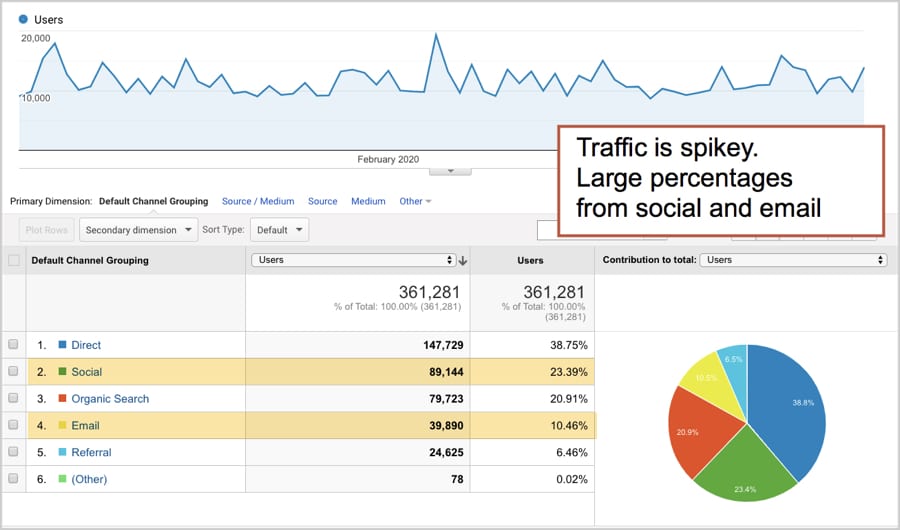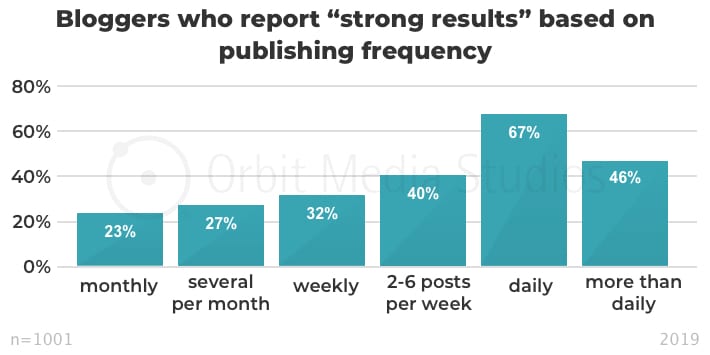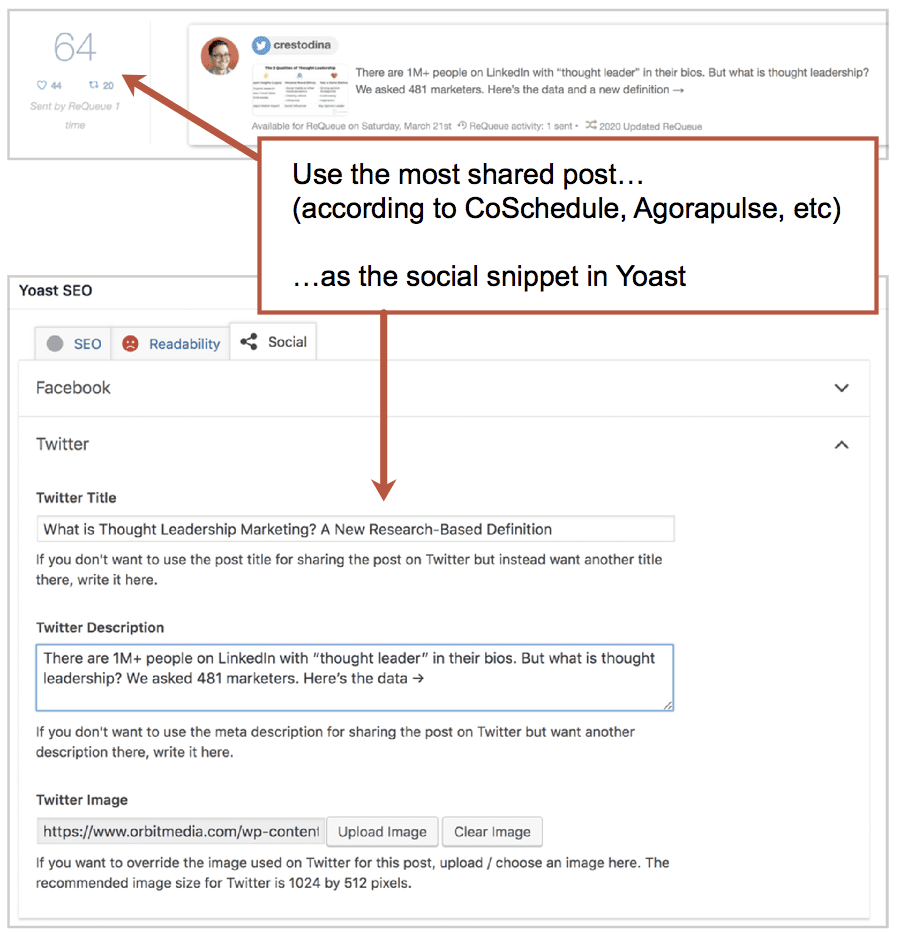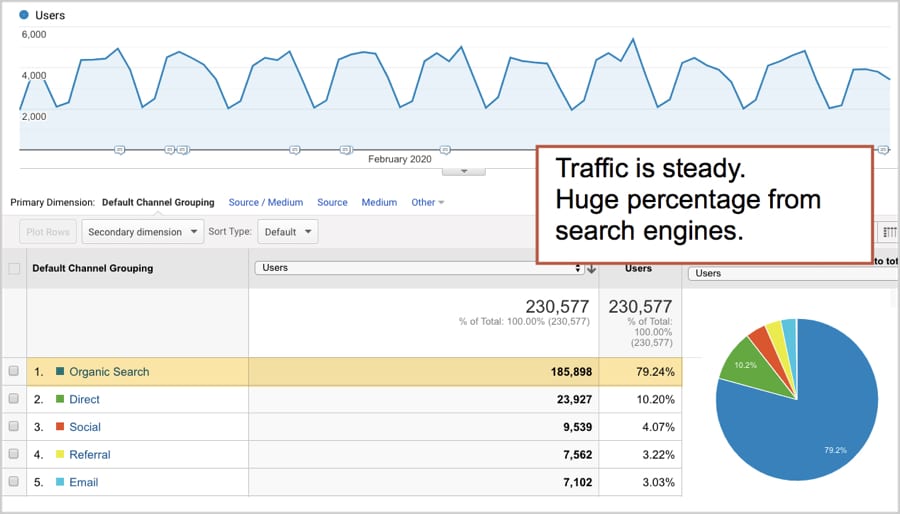A year and a half ago, Jimmy Daly of Animalz wrote a popular article explaining that there are two kinds of content strategies, publications and libraries. It got a lot of us thinking.
The Publication seeks to build an audience of repeat visitors by consistently and frequently publishing topics of broad interest to an industry, promoted to subscribers and followers.
The Library seeks to build relevance on more narrowly focused topics with deeper, more interconnected articles, discoverable through search and there when the visitor needs them.
We’re going to expand on Jimmy’s thesis here, starting with this visual breakdown showing the main differences:

So here’s what it comes down to…
To news or not to news?
That’s the big content strategy question. And it’s answered when you create your content mission statement. If you haven’t done this yet, you can create yours using this template.

It’s a question of topics, which is that middle part.
- You are running a publication if… [Content Y] includes the words news or trends, latest or recent.
- You are building a library if… [Content Y] doesn’t have any of that, then it’s probably all educational and evergreen, as in, it is relevant for a long time.
Let’s look closer at these two types of content strategies.
“The Publication” Content Strategy
What is happening? That’s why your readers are paying attention to you. They click and read because they want current information that is relevant to their industry.
Promotion and traffic patterns
Because your content is about the latest information, social media and email marketing are your most important promotion channels. They aren’t searching for it. They’re tapping, not typing. So, the key is to get them to follow and/or subscribe.
Publications need subscribers
Here’s an Analytics account for a publication. Notice the spikes. Notice the traffic mix.

Social and email are high bounce rate channels, which explains why publications have higher bounce rates than libraries. And because social and email work so well, publications get a lot of mobile traffic.
Key success factors: Speed and frequency
Publications move quickly. You need to jump in fast and report on trends, add a new spin to the topic du jour. And to condition your subscribers and followers to keep opening your emails and following your streams, you need to publish frequently and consistently.
Our annual blogger survey shows the power and effectiveness of high frequency blogs. Bloggers who publish more often are far more likely to report success.

Pro Tip: Uploading a press release does not make you a publication. The idea is to BE the press, not to RELEASE information to the press. Really, no blog should ever post a press release. It’s far better to turn that press release into an article before publishing.
Blog design and management tips for publications
The design of publications is a bit different than the design of libraries.
- Dates
Visitors need to know when it was published because value is tied to recency. The blog article template should show the date. - Prominent share buttons
Visitors often share an article before they’ve read it so put those share buttons high on the page. Here’s the data showing the lack of reading/sharing correlation. Thanks, Chartbeat! - Actively manage social snippets
Set your Open Graph tags manually or with a tool like Yoast. This gives you control over how the article will look in streams when it gets shared. Extra credit if you use data to decide what to use as your social snippets. Wait a few days after launching the article, then look up the top shares in your social media management tool (every publication should have one). Drop that into your plugin for managing social snippets on that article.

Team and resources
Publications are difficult and expensive to maintain, which is why most of us are building libraries.
- Staff Up: You are totally committed to your publishing calendar. Sustaining this usually means several full-time team members dedicated to research, writing, editing, email and social promotion.
- Stay Agile: Articles can’t stay in the review phase for weeks. So workflows have to be quick and leadership can’t micromanage the process.
- Tough to Outsource: Every journalist has a beat. Brand journalists are no different. It’s difficult to find vendors with specialized industry knowledge and connections. Outsourcing a newsroom is tough.
“The Library” Content Strategy
How can I do this? That’s why your readers are paying attention to you. They click because they want utility. They want to learn. They want practical, how-to information and advice.
Promotion and traffic patterns
Because your content answers questions and is evergreen (it time travels well) search is a big opportunity. SEO is key. Align your content with keyphrases and make it easy to find.
SEO is library science
This solves a huge problem inherent to blogs: the reverse-chronological order. Blogs are basically huge piles of posts with the most recent on top. It’s an ever-growing mess. Fine for publications but bad for libraries.
Google helps solves the problem of organization. It doesn’t matter much if the blog is disorganized, as long as the content is search optimized and the technical SEO is good.
So in the end, libraries get huge amounts of traffic from search. Here’s an Analytics account for a library. Notice the rhythm of weekday traffic and low spikes. Notice the traffic mix.

This is an amazingly efficient way to create visibility. A high-ranking article may attract hundreds of visitors everyday for years. But the downside is the over-reliance on search. Beware that big, looming SEO trend: declining click-through rates from search.
But even if search traffic declines, there’s another benefit to best-page-on-the-internet content: it attracts links, especially when it’s original research. This is the cornerstone of the content strategy framework for SEO, which is the key to B2B lead generation.
Pro-Tip: Create a start here page. Clear blog categories are critical for libraries, but a page that welcomes the visitor to the blog is the ultimate in categorization.
Key success factors: Depth and length
Libraries have detailed, practical, often exhaustive articles.
Again, the blogger survey shows this clearly. Bloggers who publish long-form content get better results.
But wait. We saw that frequency correlated with success. How is it possible to publish a new 2000 word best-article-on-the-topic every day?
It’s not.
The bloggers who write long-form posts are building libraries. The bloggers who post daily are running publications. These are two different content strategies.
Blog design and management tips for libraries
The experience for visitors is a bit different for libraries.
- No dates
It’s best if your blog template design doesn’t date stamp each article. It will simply make your evergreen content look older faster. If a date is relevant to the piece (ie, it’s research) then simply put the date in the header and body text.Yes, I know this is controversial advice. Yes, I’m ready for the debate. - Categories and Search Tools
As the library grows, so does the importance of categorization and search.Faceted search allows visitors to filter using several categories (both “safety tips” and “roofing”), but avoid the temptation to make one of the facets a content format (such as white papers, videos and guides) since this feature isn’t as usually that helpful or popular. - Keep updating old articles
SEO makes some of your articles highly visible for years. So commit to keeping those posts current. Use Analytics to see which articles are performing best in search and put those on a schedule for updating. Do it for the readers, but enjoy the more durable rankings that will follow.
Team and resources
Libraries are inherently more efficient, because each piece of content works harder over time. But they still take dedication, time and possibly money.
- Lean and mean
You can share the load of writing across several experts on the team, but someone needs to be serious about SEO and content promotion. - Outsourcing is an option
How-to content is relatively easy to outsource, because the vendor can simply look at high-performing content in your industry, then beat it with something higher-quality.
 |
robert rose, THE CONTENT ADVISORY“Look for great visual storytellers! Someone that creates unique and engaging content. All the algorithms point to social signals and conversations these days. Are people responding to their posts beyond a quick like?” |
Headline tips for the two content strategies
They are the key to unlocking website traffic for every content strategy. But the headline isn’t really just one thing.
There are title tags, H1 headers, subject lines and social media posts, and each should be tailored versions of the article “headline.”
Every headline is a balancing act, but the balance depends on the channel and the content strategy.

*To see a list of those 3-word trigrams and for all of our best advice on headlines, read this article.
8 things every blog needs
There are a few things that every content strategy needs. Every blog can benefit from:
- Author names, faces and pages
- Strong calls to action
- Visuals and video
- Good internal linking
- Gated resources
- Expert sources/contributors
- Original research
- A bit of paid promotion
Hey, what about commentary and opinion?
It is its own, third type of content. Where does this fit in? More common in publications than libraries, but it can fit anywhere. And it’s very effective.
Strong opinion is the key difference between thought leadership marketing and regular content marketing. Brands that take a stand are more likely to attract an audience and trigger action.
A simpler way to think of things…
A or B? This or that?
It’s helpful to break things down. If you found this useful, here are some other posts that make simple distinctions. It’s a fun, fast way to learn.
- Search vs. Social. Show me the difference →
- The two types of visitors. How to attract each →
- The two types of marketers. Which one are you? →
The post There Are Two Kinds of Content Strategies: Publications and Libraries appeared first on Orbit Media Studios.
from Orbit Media Studios https://www.orbitmedia.com/blog/two-kinds-of-content-strategies/
via IFTTT
from
https://sarahbarnett0.wordpress.com/2020/03/18/there-are-two-kinds-of-content-strategies-publications-and-libraries/
No comments:
Post a Comment